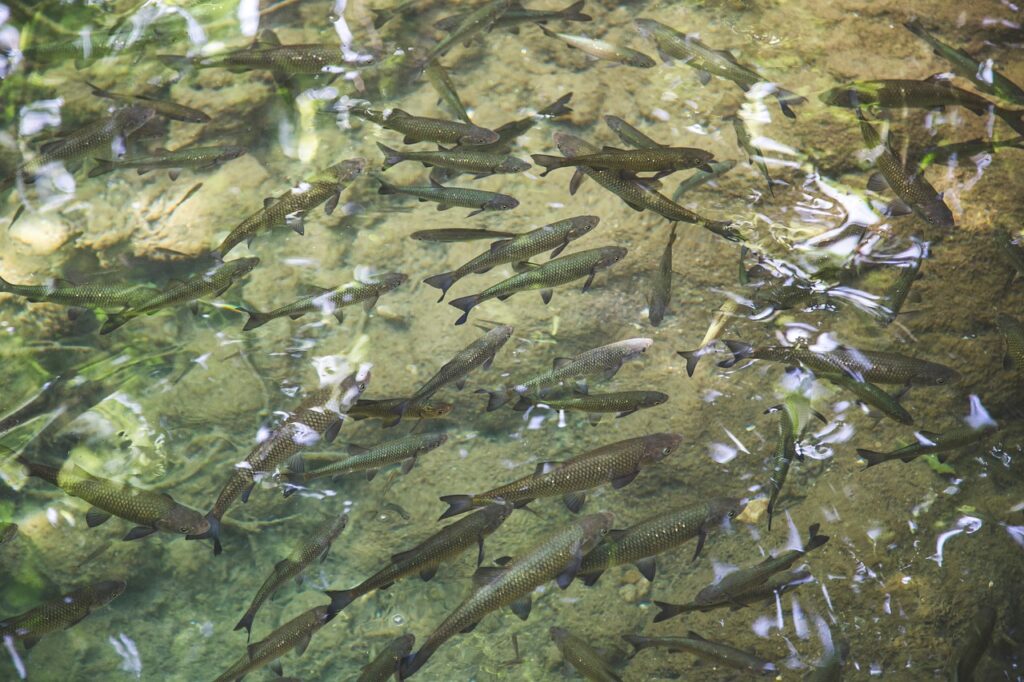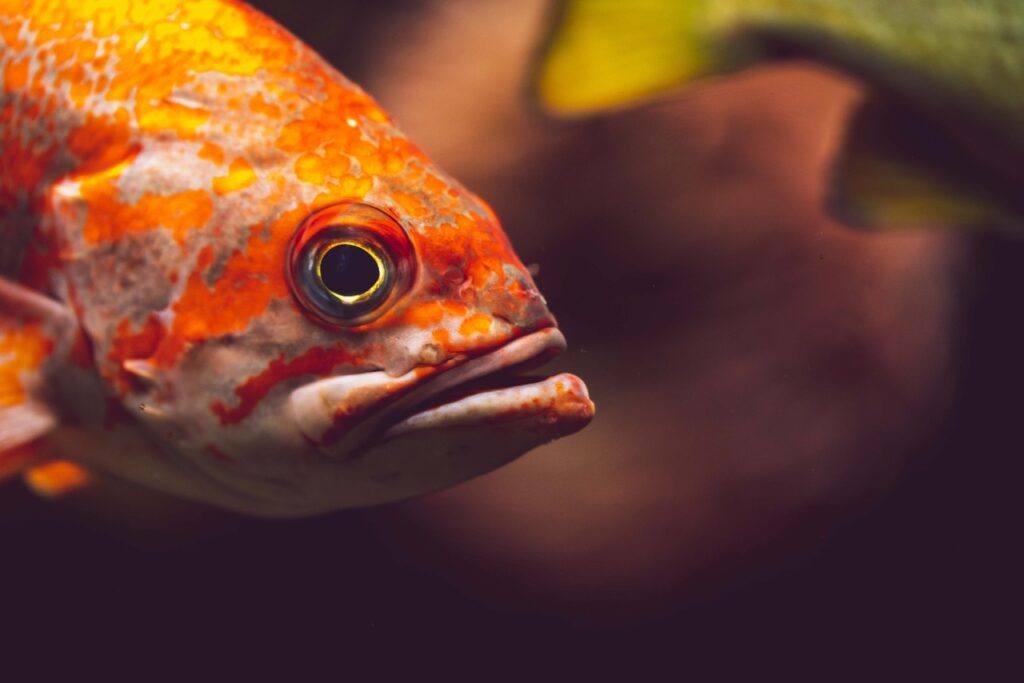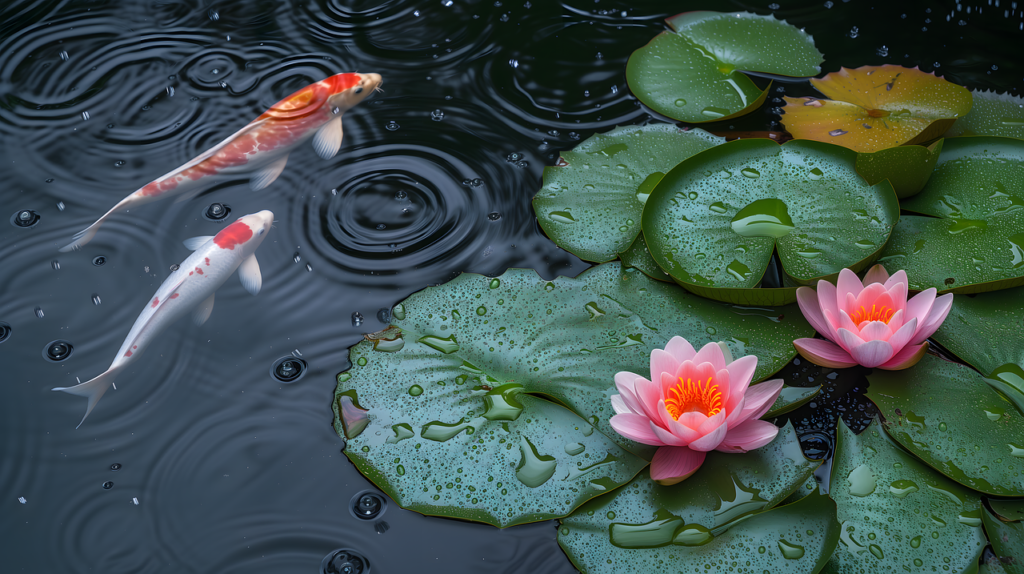Whether you’re a seasoned aquarist or just starting out, it can be alarming to notice tiny white spots dotting your fish’s scales. But don’t worry, we will help you understand recognizing white spot disease, and you will also learn all about this common fish disease, what causes it, the symptoms to look for, and most importantly, how to treat and prevent it.
What is White Spot Disease?
White Spot Disease, commonly referred to as Ich or Ichthyophthirius multifiliis, is a parasitic infection that can affect both freshwater and saltwater fish. The disease is characterized by tiny white cysts that appear on the fish’s skin, fins, and gills. These cysts look like grains of salt or sugar, giving the impression of snowflakes on your fish.
The Culprit: Ichthyophthirius multifiliis
Ichthyophthirius multifiliis, often abbreviated as “Ich,” is the parasite responsible for this disease. It has a complex life cycle that makes it particularly challenging to treat. Understanding this life cycle is crucial to effectively combating the disease.
| Life Stage | Description |
|---|---|
| Trophont | This is the feeding stage where the parasite attaches itself to the fish. |
| Tomont | After leaving the fish, the trophont transforms into a cyst, known as tomont. |
| Theront | The tomont releases free-swimming theronts, which infect new fish. |

Recognizing White Spot Disease
So, how do you identify White Spot Disease? Well, the first and most obvious sign is the appearance of white spots on your fish. But there are other symptoms to watch out for as well.
Visual Signs
- White Spots: Small, white cysts that look like grains of salt.
- Clamped Fins: The fish may hold their fins close to their body.
- Labored Breathing: The infection can affect the gills, making it difficult for the fish to breathe.
Behavioral Signs
- Scratching: Infected fish may rub against objects in the tank.
- Lethargy: Infected fish often become less active.
- Loss of Appetite: Fish may eat less or stop eating entirely.
Causes and Risk Factors
White Spot Disease can strike any fish, but some conditions make your tank more prone to an outbreak. Knowing these risk factors can help you take preventive measures.
Stress
Stress weakens a fish’s immune system, making it more susceptible to diseases like Ich. Common stressors include:
- Poor Water Quality: High levels of ammonia, nitrites, or nitrates.
- Overcrowding: Too many fish in one tank.
- Sudden Temperature Changes: Rapid shifts in temperature can stress fish.
New Introductions
Adding new fish or plants to your tank can introduce Ich to an otherwise healthy environment. Always quarantine new additions before introducing them to your main tank.
Poor Diet
A balanced diet is crucial for fish health. Nutritional deficiencies can weaken the immune system, making fish more susceptible to disease.

Life Cycle of Ich
Understanding the life cycle of Ichthyophthirius multifiliis can significantly help in effectively treating the disease. The parasite has a multi-stage lifecycle, each with unique characteristics.
The Trophont Stage
This is the stage where the parasite is visible on your fish. It feeds on the fish’s skin and tissue, causing the characteristic white cysts.
The Tomont Stage
After detaching from the fish, the parasite falls to the bottom of the tank and encysts, becoming a tomont. In this stage, the tomont is virtually impervious to treatment.
The Theront Stage
The tomont breaks open to release new, free-swimming theronts. These infect other fish, starting the cycle anew.
| Stages of Ich’s Life Cycle | Duration | Treatment Feasibility |
|---|---|---|
| Trophont | 3-7 days | Difficult: Protected under the fish’s mucus and scales |
| Tomont | 24 hours to weeks | Virtually Impervious: Resistant to most forms of treatment |
| Theront | 24-48 hours | Most Vulnerable: Free-swimming and susceptible to treatment chemicals |
Treatment Options
Now that you understand the parasite and its life cycle, let’s discuss how to treat White Spot Disease. Prompt treatment is crucial to prevent the disease from spreading.
Chemical Treatments
There are several medications available for treating Ich. Always follow the manufacturer’s instructions and remove activated carbon from the filter, as it can absorb the medication.
- Malachite Green: Effective but toxic to some fish and invertebrates.
- Formalin: Often used in combination with Malachite Green.
- Copper-Based Medications: Highly effective but requires careful dosing.

Gradual Temperature Increase
Raising the water temperature can speed up the parasite’s life cycle, making it more vulnerable to treatment. Gradually increase the temperature by 2°F (1°C) per day until it reaches 86°F (30°C). Maintain this for 10 days, then return to normal temperature gradually.
Salt Treatment
Adding aquarium salt can help reduce the stress on fish and kill off the free-swimming theronts. Use 1 tablespoon of salt per 5 gallons of water.
Quarantine Tank
Separating infected fish into a quarantine tank can prevent the disease from spreading to healthy fish. This also allows for focused treatment.
Prevention Strategies
Once you’ve dealt with an infection, you’ll want to take steps to prevent it from happening again. Here are some preventative measures you can implement.
Quarantine New Additions
Always quarantine new fish or plants for at least two weeks before adding them to your main tank. This helps ensure that any potential diseases are identified and treated before they can spread.
Maintain Water Quality
Regular water changes and monitoring water parameters is crucial for fish health. Invest in a good water testing kit and make it a habit to check water conditions weekly.
Proper Diet
Feed your fish a balanced diet to keep their immune systems strong. A mix of high-quality flakes, pellets, and frozen foods can provide all the necessary nutrients.
Avoid Overcrowding
Keeping too many fish in a tank can lead to stress and poor water quality. Follow the general rule of one inch of fish per gallon of water, but adjust based on the specific requirements of your fish species.
The Role of Stress in White Spot Disease
As previously mentioned, stress is a significant factor in the outbreak of White Spot Disease. Managing stress effectively can be a game-changer in keeping your fish healthy.
Identifying Stress Factors
- Physical Environment: Ensure there are plenty of hiding spots and appropriate tank decor.
- Social Dynamics: Aggressive tank mates can stress out your fish. Opt for compatible species.
- Water Parameters: Sudden changes in pH, hardness, or temperature can stress fish.
Mitigating Stress
Creating a stable and suitable environment for your fish can significantly reduce stress levels.
- Stable Temperature: Use a reliable heater and thermometer to maintain a consistent temperature.
- Consistent Lighting: Use a timer to ensure your tank’s lighting mimics natural day and night cycles.
- Regular Maintenance: Keep a schedule for water changes, filter cleaning, and substrate vacuuming.
FAQs About White Spot Disease
Can White Spot Disease Go Away on Its Own?
No, White Spot Disease will not go away on its own. Without treatment, it can quickly spread and become fatal.
Is White Spot Disease Contagious?
Yes, it is highly contagious. It can spread rapidly from fish to fish within the same tank.
How Long Does It Take to Treat White Spot Disease?
With proper treatment, you can expect to see improvements in about a week. However, the entire treatment process can take up to 14 days to ensure all stages of the parasite are eradicated.
Can Saltwater Fish Get White Spot Disease?
Yes, saltwater fish can also get a form of Ich called Cryptocaryon irritans. The symptoms and treatment are similar but may require specific marine medications.
Is it Safe to Use More Than One Treatment Method?
Always consult a veterinarian or a fish care expert before combining treatments, as some medications can interact negatively.

Recognizing White Spot Disease
Dealing with White Spot Disease can be stressful, but understanding the infection, recognizing the signs, and knowing how to treat it can make all the difference. By taking preventive measures and maintaining a stable environment, you can keep your fish healthy and happy. Remember, the key is to act quickly and ensure you’re providing the best care for your aquatic friends.
So the next time you see what looks like snowflakes on your fish, don’t freak out! You now have the knowledge and tools to tackle White Spot Disease effectively. Dive into your tank maintenance routine, quarantine new additions, and keep an eye on your fish’s behavior—your underwater world will flourish!
Happy fish keeping!
